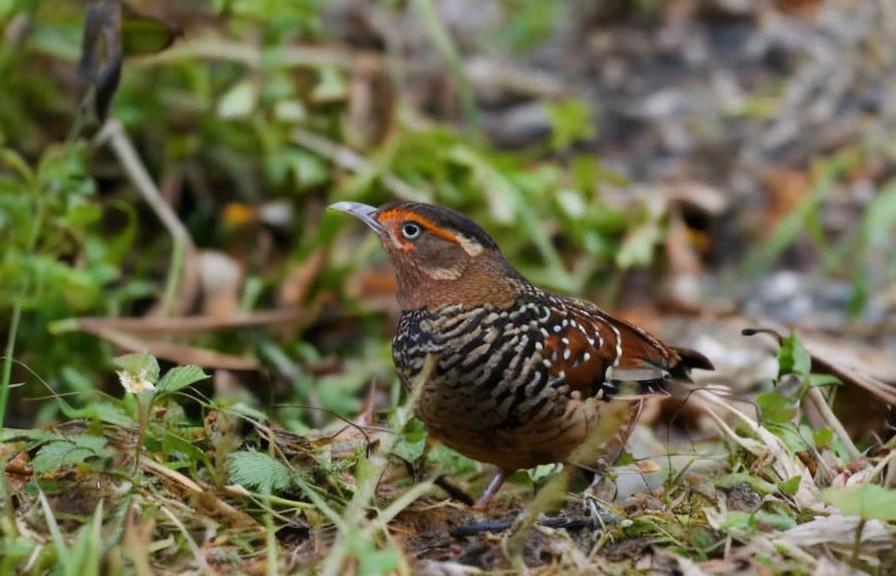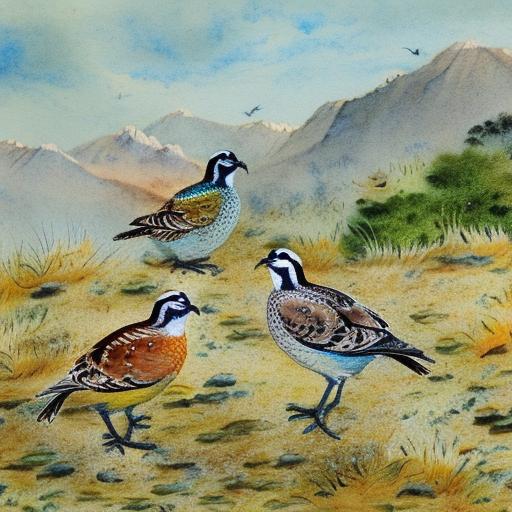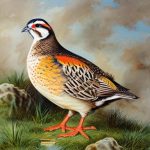Quails are small, ground-dwelling birds that belong to the family Phasianidae. They are known for their delicious meat and eggs, and are popular among poultry farmers and hobbyists. In India, there are several quail breeds that are raised for their meat, eggs, and for ornamental purposes. These breeds include the Common Quail (Coturnix coturnix), the Japanese Quail (Coturnix japonica), the Button Quail (Turnix spp.), the Rain Quail (Coturnix coromandelica), and the Bobwhite Quail (Colinus virginianus). Each of these breeds has its own unique characteristics and is suited to different purposes, making them an important part of India’s poultry industry.
Quail farming has gained popularity in India due to the high demand for quail meat and eggs, as well as the relatively low cost of production. Quails are known for their fast growth rate, high egg production, and ability to thrive in small spaces, making them an ideal choice for small-scale farmers and backyard poultry enthusiasts. Additionally, quail meat and eggs are considered to be healthier alternatives to chicken and duck products, as they are lower in fat and cholesterol. As a result, the management and conservation of quail breeds in India is of great importance to ensure the sustainability of the industry and the preservation of these unique bird species. In this article, we will explore the different quail breeds found in India, their characteristics, and the management and conservation efforts aimed at preserving these valuable birds.
Key Takeaways
- Quail farming is gaining popularity in India due to the high demand for quail meat and eggs.
- The Common Quail, also known as European Quail, is a migratory bird that is found in India during the winter months.
- The Japanese Quail is the most commonly farmed quail species in India due to its high egg production and fast growth rate.
- The Button Quail, also known as the Bustard Quail, is a small, ground-dwelling bird that is found in grasslands and scrublands in India.
- The Rain Quail, also known as the Black-breasted Quail, is a small bird that is found in open grasslands and agricultural fields in India.
- The Bobwhite Quail, native to North America, has been introduced to India for game bird hunting and as a pet bird.
- The management and conservation of quail breeds in India is important to ensure sustainable farming practices and the preservation of genetic diversity.
The Common Quail (Coturnix coturnix)
The Common Quail, also known as the European Quail, is a migratory bird species that is found in Europe, Asia, and Africa. In India, the Common Quail is a popular game bird and is also raised for its meat and eggs. This breed is known for its distinctive call, which is often heard during the breeding season. Common Quails are small birds with brown plumage and a mottled appearance, making them well-camouflaged in their natural habitat. They are ground-dwelling birds that prefer open grasslands, agricultural fields, and meadows.
Common Quails are known for their high egg production, with females laying up to 12-15 eggs at a time. The eggs are small and speckled, and are considered a delicacy in many parts of India. In addition to their egg production, Common Quails are also valued for their tender and flavorful meat. Due to their migratory nature, Common Quails are often hunted during their migration periods, leading to concerns about their conservation status. Efforts are being made to conserve this species through habitat protection, captive breeding programs, and sustainable hunting practices.
The Japanese Quail (Coturnix japonica)
The Japanese Quail, also known as the Coturnix or Pharaoh Quail, is a popular breed that is raised for its meat and eggs. This breed is native to East Asia and has been domesticated for centuries. Japanese Quails are small birds with a plump body, mottled brown plumage, and a distinctive white stripe above their eyes. They are known for their fast growth rate and high egg production, making them a valuable asset to poultry farmers in India.
Japanese Quails are highly adaptable birds that can thrive in a variety of environments, including cages, aviaries, and free-range systems. They are known for their docile nature and can be easily handled, making them suitable for backyard poultry enthusiasts. Japanese Quails are prolific layers, with females laying up to 300 eggs per year. The eggs are small but nutritious, with a high protein content and rich flavor. In addition to their egg production, Japanese Quails are also valued for their tender and succulent meat, which is considered a delicacy in many parts of India. Conservation efforts for the Japanese Quail focus on maintaining genetic diversity within captive populations and promoting sustainable farming practices to ensure the long-term viability of this important breed.
The Button Quail (Turnix spp.)
The Button Quail, also known as the Bustard Quail or Little Quail, is a small breed of quail that is found in India and other parts of Asia. This breed is known for its diminutive size, cryptic plumage, and secretive nature. Button Quails are ground-dwelling birds that prefer dense vegetation and grassy habitats. They are often found in scrublands, grasslands, and agricultural fields where they forage for seeds, insects, and small invertebrates.
Button Quails are unique among quail breeds due to their monogamous mating behavior and elaborate courtship displays. Males are known for their intricate calls and aerial displays during the breeding season. Female Button Quails lay small clutches of eggs in concealed nests on the ground. The eggs are incubated by both parents and hatch into precocial chicks that are able to feed themselves shortly after hatching. Conservation efforts for Button Quails focus on protecting their natural habitats from habitat loss and degradation. Additionally, captive breeding programs have been established to maintain genetic diversity within captive populations and to raise awareness about the importance of conserving this unique quail breed.
The Rain Quail (Coturnix coromandelica)
The Rain Quail, also known as the Black-breasted Quail or Rainbird, is a small ground-dwelling bird that is found in India and other parts of South Asia. This breed is known for its distinctive call, which is often heard during the monsoon season. Rain Quails are small birds with mottled brown plumage, a black bib on their chest, and a short tail. They prefer open grasslands, agricultural fields, and scrublands where they forage for seeds, insects, and small invertebrates.
Rain Quails are known for their secretive nature and elusive behavior, making them difficult to observe in the wild. They are often detected by their calls or flushed from cover when disturbed. Female Rain Quails lay small clutches of eggs in concealed nests on the ground. The eggs are incubated by both parents and hatch into precocial chicks that are able to feed themselves shortly after hatching. Conservation efforts for Rain Quails focus on protecting their natural habitats from habitat loss and degradation. Additionally, research is being conducted to better understand their ecology and behavior in order to develop effective conservation strategies.
The Bobwhite Quail (Colinus virginianus)

The Bobwhite Quail, also known as the Northern Bobwhite or Virginia Quail, is a popular game bird that is native to North America. This breed has been introduced to India for hunting purposes and is also raised for its meat and eggs. Bobwhite Quails are small birds with mottled brown plumage, a distinctive white throat patch, and a short tail. They prefer open grasslands, agricultural fields, and meadows where they forage for seeds, insects, and small invertebrates.
Bobwhite Quails are known for their distinctive call, which sounds like “bob-white” or “poor-bob-white.” This call is often heard during the breeding season when males establish territories and attract females. Female Bobwhite Quails lay small clutches of eggs in concealed nests on the ground. The eggs are incubated by both parents and hatch into precocial chicks that are able to feed themselves shortly after hatching. Conservation efforts for Bobwhite Quails focus on maintaining genetic diversity within captive populations and promoting sustainable hunting practices to ensure the long-term viability of this important game bird.
The Management and Conservation of Quail Breeds in India
The management and conservation of quail breeds in India is of great importance to ensure the sustainability of the industry and the preservation of these unique bird species. Efforts are being made to conserve quail breeds through habitat protection, captive breeding programs, research initiatives, and public awareness campaigns. Habitat protection is crucial for maintaining viable populations of quails in the wild. This includes preserving natural grasslands, scrublands, agricultural fields, and other habitats where quails forage for food and establish nesting sites.
Captive breeding programs have been established to maintain genetic diversity within captive populations of quails. These programs aim to ensure that quails raised in captivity retain their wild traits and behaviors while also promoting sustainable farming practices to ensure the long-term viability of these important bird species. Research initiatives play a crucial role in understanding the ecology, behavior, and conservation needs of quails in India. This includes studying their habitat requirements, breeding biology, migration patterns, population dynamics, and threats they face in the wild.
Public awareness campaigns are essential for raising awareness about the importance of conserving quail breeds in India. This includes educating farmers, hunters, policymakers, and the general public about the ecological significance of quails as well as the economic benefits of sustainable quail farming practices. By promoting responsible stewardship of quail populations and their habitats, we can ensure that these unique bird species continue to thrive in India for generations to come.
In conclusion, quail breeds play an important role in India’s poultry industry due to their high egg production, fast growth rate, and delicious meat. The management and conservation of quail breeds in India is essential to ensure the sustainability of the industry and the preservation of these unique bird species. Efforts aimed at conserving quails include habitat protection, captive breeding programs, research initiatives, and public awareness campaigns. By working together to protect quails and their habitats, we can ensure that these valuable bird species continue to enrich our lives for years to come.
If you’re interested in learning more about the different breeds of quail in India, be sure to check out the article on Poultry Wizard’s website titled “The Chicken Coop Country Diner.” This informative piece provides valuable insights into the various breeds of quail found in India and their unique characteristics. Whether you’re a quail enthusiast or simply curious about poultry diversity, this article is a must-read. Learn more here
FAQs
What are the different breeds of quail in India?
There are several breeds of quail that are commonly found in India, including the Japanese quail (Coturnix japonica), the Bobwhite quail (Colinus virginianus), and the King quail (Excalfactoria chinensis).
What are the characteristics of the Japanese quail?
The Japanese quail is the most commonly raised breed of quail in India. It is known for its high egg production, fast growth rate, and adaptability to various environmental conditions. The Japanese quail is also popular for its meat production.
What are the characteristics of the Bobwhite quail?
The Bobwhite quail is known for its distinctive call and is often raised for its meat. It is a popular game bird and is also kept for ornamental purposes.
What are the characteristics of the King quail?
The King quail, also known as the button quail, is the smallest breed of quail. It is often kept for its attractive appearance and is popular in aviculture. The King quail is also known for its gentle nature and is relatively easy to care for.
What are the uses of quail in India?
Quail in India are primarily raised for their eggs and meat. Quail eggs are considered a delicacy and are known for their nutritional value. Quail meat is also in demand due to its lean and tender quality. Additionally, quail are sometimes kept for ornamental and hobby purposes.
Meet Walter, the feathered-friend fanatic of Florida! Nestled in the sunshine state, Walter struts through life with his feathered companions, clucking his way to happiness. With a coop that’s fancier than a five-star hotel, he’s the Don Juan of the chicken world. When he’s not teaching his hens to do the cha-cha, you’ll find him in a heated debate with his prized rooster, Sir Clucks-a-Lot. Walter’s poultry passion is no yolk; he’s the sunny-side-up guy you never knew you needed in your flock of friends!







